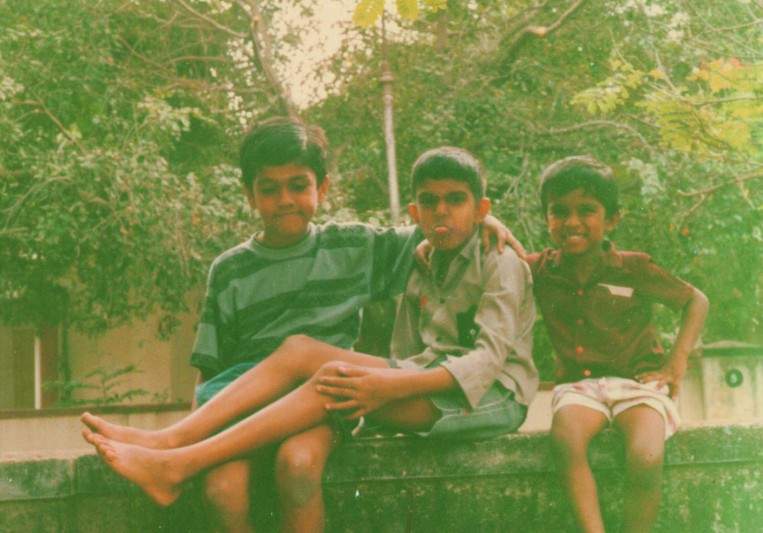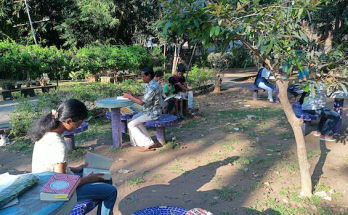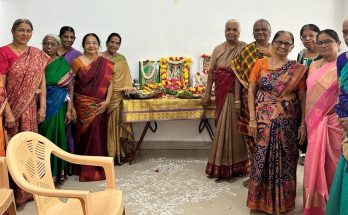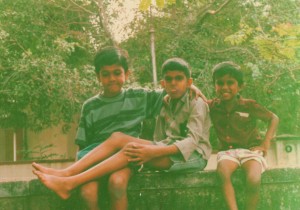 De Monte Colony was a quiet, verdant space once. Women formed a club for social and devotiomal activities, men played shuttle after work and children took jolly trips in cycle-rickshaws. Old-timers rewind.
De Monte Colony was a quiet, verdant space once. Women formed a club for social and devotiomal activities, men played shuttle after work and children took jolly trips in cycle-rickshaws. Old-timers rewind.
When Rajalakshmi’s family celebrated makara-sankaranti, the brooding trees created a natural shamiana. The gentle breeze blowing across the colony relaxed family and guests. And there was lots of space to accommodate streams of children, grand-children and relatives.
Welcome to De Monte Colony of the 1970s.
A place which still lives as beautiful memories for all the people who once resided here.
Over 30 houses made the colony and the residents came from different parts of India.
“The land belonged to the Catholic church and Eswara Iyer, founder Easun Engineering, leased the entire lot of houses from its trust,” says one-time resident C. V. Venkatakrishnan who is now 75 years old and resides in Palathope, Mylapore.
The ground was very fertile. Each house had lots of flowering and fruit trees. Mangoes, guavas, pomegranate, gooseberry, jack-fruit and many more.
“We even used to have a kitchen garden in our house,” he adds.
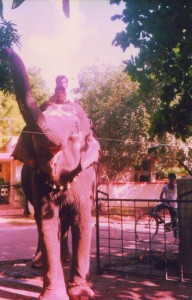 The women were mostly housewives and had plenty of time for many useful pastimes.
The women were mostly housewives and had plenty of time for many useful pastimes.
“We formed a ladies club and met on alternate Wednesdays and used to have pot luck lunch,” says Venkatakrishnan’s wife Lakshmi.
And since this group comprised of Bengalis, Malayalis, Punjabis, Andhraites and people from Karnataka the table was often laden with a variety of dishes prepared at home.
“We would sit out on the lawns and enjoy some brain-tickling games. The lunch meetings used to be so much fun and entertaining. Many ladies also gathered in one of the residents’ house and learnt slokas and songs,” recalls Lakshmi.
One of the oldest and longest residents was Rajalakshmi Subramanian. Her husband took up a job as the chief transformer erection engineer at Easun in 1968 and they lived there here 2006.
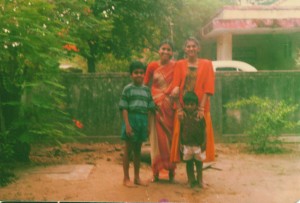 She recalls how her grandchildren used to love playing outside in the colony. “Our house had a mango tree, a gooseberry tree, a guava tree and a jackfruit tree. These trees made a canopy over the house. So the children would always be outside. They would walk on the walls through the entire colony to get from one house to another,” she says at her home in Co-operative Colony.
She recalls how her grandchildren used to love playing outside in the colony. “Our house had a mango tree, a gooseberry tree, a guava tree and a jackfruit tree. These trees made a canopy over the house. So the children would always be outside. They would walk on the walls through the entire colony to get from one house to another,” she says at her home in Co-operative Colony.
Her daughter-in-law Meenakshi Srinivasan adds, “We loved the trees so much, that now, in the terrace garden of our apartment, we are growing small trees and flowering plants. A small compensation for what we had to give up.”
‘Women would also organize picnics and outings. “We would request the company to send us a bus to take us out,” says Rajalaskhmi.
One resident, Srilakshmi Mohanram, used to conduct craft classes at her house. We learnt quite a few things from her, she adds.
The factory used to be located at Thiruvottriyur and the office was ‘in town’. The company used to provide cars to some employees, and the office van was also available.
Car-pooling was very common back then, says Venkatakrishnan. “We worked 6 days a week. Once we were back home, we would play shuttle or sit outside and chat with friends.”
The residents all pooled money and created a shuttle court in one of the bigger residences. This is where the men would spend their free time, playing outdoor sports with their children.
Boston School on Mowbarys Road ( now T. T. K. Road) was newly opened then. The kids would go there for their elementary education and then on to P. S. High School or VidyaMandir or D. A. V. for higher schooling.
Autos were non-existent and the bus on route 12A was the only service which served the colony. Rajalakshmi’s son Srinivasan adds, “We used to have a regular cycle-rickshaw puller called Kabali. He used to take us on trips outside the colony if we needed.”
Though many stories are associated with Dem Monte Colony now, it seems to have been a very happy, quiet place then.
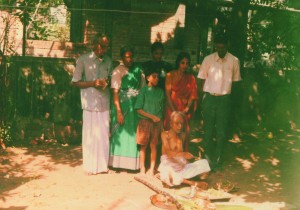 Rajalakshmi says, “We have seen so many functions and happy occasions in our house there. Every year, my husband used to perform the Makara-Sankranthi pooja outside under the trees. Our grand children and great grand children were born there . . many engagements, seemandhams all happened in that house,” she recalls.
Rajalakshmi says, “We have seen so many functions and happy occasions in our house there. Every year, my husband used to perform the Makara-Sankranthi pooja outside under the trees. Our grand children and great grand children were born there . . many engagements, seemandhams all happened in that house,” she recalls.
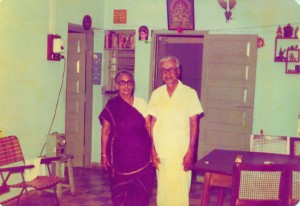 “All our neighbours used to pitch in. There was no ceremony or formality to invite someone. Help was voluntary given and taken,” she adds.
“All our neighbours used to pitch in. There was no ceremony or formality to invite someone. Help was voluntary given and taken,” she adds.
Water scarcity was not uncommon even then though. Hand pumps were in use.
Easun would also arrange for tankers to bring water to the community to fill their sumps.
“The houses were not well maintained,” says Lakshmi. The flooring was uneven. “By the time we left, it had sunk in by a few inches.”
“Once when my husband was doing his pooja, a stone from the ceiling fell down’ recalls Rajalakshmi. “Luckily, it fell on the silver gindy that was kept there and not on his head”, she chuckles.
Fruit and vegetable vendors would come calling at the colony. There were a few stores on Mowbrays Road and a chetty shop for grocery shopping.
Festivals were celebrated at home, by the family. “There is an irony here though,” says Venkatakrishnan. “In our days, the park was unsavory but the colony was pleasant. Now, the park is well maintained, but the colony is rundown. I guess all things have to change.”
——————–
< This story is based on a response we received from …………….. to our earlier report on De Monte Colony as it is today, better-known now and the object of curiosity following a Tamil film by the same name.

